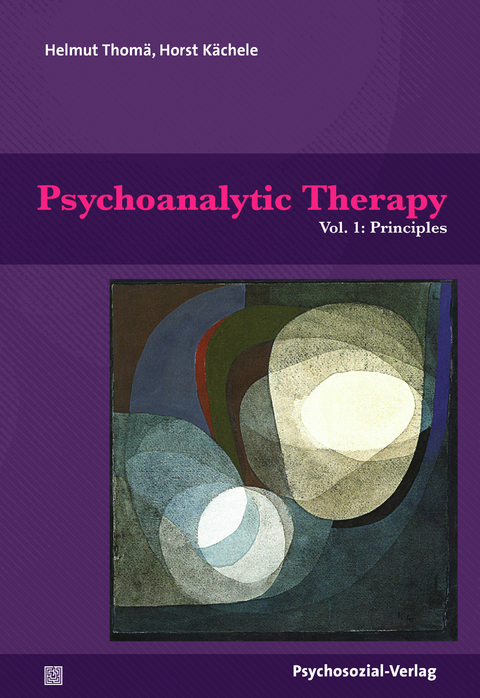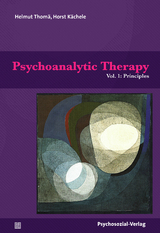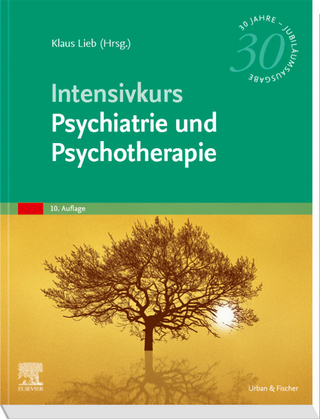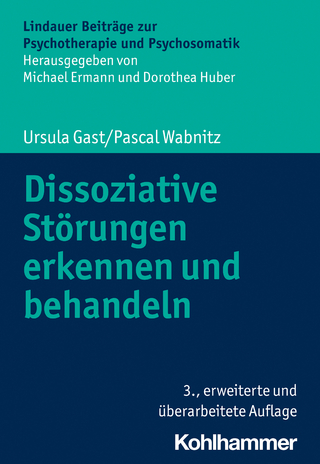Psychoanalytic Therapy
Psychosozial-Verlag
978-3-8379-2951-5 (ISBN)
The principles underlying psychoanalytic technique and their impact on practice are the main objects of this comprehensive and systematic study, which is based on research in psychoanalysis. By taking the differences between psychoanalytic schools and the finding of related disciplines into account, the authors describe new perspectives. After descriptions of the development of psychoanalysis, chapters are devoted to comprehensive accounts of the key concepts of the psychoanalytic therapy – transference, countertransference, and resistance – as well as to the initiation and conduct of treatment, to the role of models, and to the scientific status of psychoanalytic theory. Psychoanalysis, understood in such terms, can be applied to a broad spectrum of mental disorders and psychosomatic illnesses.
Endorsement
Christa Rohde-Dachser
Foreword to the Second English Edition
Peter Fonagy
Preface to the Second English Edition
Introduction
Historical Background
Signpost
1 Psychoanalysis: The Current State
1.1 Our Position
1.2 The Psychoanalyst’s Contribution
1.3 Crisis of Theory
1.4 Metaphors
1.5 Training and Research
1.6 Directions and Currents
1.7 Sociocultural Change
1.8 Convergences and Divergences
2 Transference and Relationship
2.1 Transference as Repetition
2.2 Transference as Unconscious Schema
2.3 Suggestion, Suggestibility, and Transference
2.4 Dependence of Transference Phenomena on Technique
2.5 Transference Neurosis as an Operational Concept
2.6 A Controversial Family of Concepts: Real Relationship, Therapeutic Alliance, Working Alliance, and Transference
2.7 The New Object as Subject: From Object Relationship Theory to Two-Person Psychology
2.8 The Recognition of Actual Truths
2.9 The Here-and-Now in a New Perspective
2.10 Intersubjectivity, Bifocality of Transference and the Third
3 Countertransference
3.1 Countertransference: The Cinderella in Psychoanalysis
3.2 Stage Two: Positive Aspects of Countertransference
3.3 Stage Three: Countertransference in Intersubjective Psychoanalysis
3.4 Specific Issues Related to Countertransference
3.4.1 Consequences and Problems of the Comprehensive Conception
3.5 Concordance and Complementarity of Countertransference
3.6 Should the Analyst Admit Countertransference or Not?
3.7 How to Deal with Countertransference in Clinical Work?
4 Resistance
4.1 General Factors
4.1.1 Classification of the Forms of Resistance
4.1.2 Function of Resistance in Regulating Relationships
4.1.3 Resistance and Defense
4.2 Anxiety and the Protective Function of Resistance
4.3 Repression and Transference Resistance
4.4 Id and Superego Resistance
4.4.1 The Negative Therapeutic Reaction
4.4.2 Aggression and Destructiveness: Beyond the Mythology of Instinct
4.5 Secondary Gain from Illness
4.6 Identity Resistance and the Safety Principle
5 Interpretation of Dreams
5.1 Freud’s Theory of Dreams and Dreaming
5.2 Theoretical Remarks on Freud’s Theory
5.3 Day Residue and Infantile Wish
5.3.1 Wish Fulfilment Theory: A Unifying Principle of Explanation
5.3.2 Self-Representation and Problem Solving
5.4 Self-Representation Theory and Its Consequences
5.5 Clinical Dream Research
5.6 Experimental Dream Research
5.7 Technique of Dream Interpretation
5.7.1 General Points of View
5.7.2 Freud’s Recommendations and Later Extensions
6 The Initial Interview and the Latent Presence of Third Parties
6.1 The Problem
6.2 Diagnosis
6.3 Therapeutic Aspects
6.4 Decision Process
6.5 The Patient’s Relatives
6.5.1 The Burden on the Relatives
6.5.2 Typical Situations
6.6 Third-Party Payment
6.6.1 Psychoanalysis and the German Health Insurance System
6.6.2 The Impact on the Psychoanalytic Process
7 Rules
7.1 The Multiple Functions of Psychoanalytic Rules
7.2 Free Association: The Fundamental Rule of Therapy
7.2.1 Features and Development
7.2.2 Instructing the Patient About the Fundamental Rule
7.2.3 Free Association in the Analytic Process
7.3 Evenly Suspended Attention
7.4 The Psychoanalytic Dialogue and the Counterquestion Rule
7.4.1 The Foundation and History of the Stereotype
7.4.2 Rules Governing Cooperation and Discourse
7.4.3 Object Finding and Dialogue
8 Means, Ways, and Goals
8.1 Time and Place
8.2 Psychoanalytic Heuristics
8.3 Specific and Nonspecific Means
8.3.1 General Points of View
8.3.2 Remembering and Reconstruction
8.3.3 Intervention, Reaction, and Insight
8.3.4 New Beginning and Regression
8.4 Transference Interpretations and Reality
8.5 Silence
8.6 Acting Out and Enactment
8.6.1 Acting Out and Action in Psychoanalysis
8.6.2 The Irruption of the Enactment
8.7 Working Through
8.8 Learning and Restructuring
8.9 Termination
8.9.1 General Considerations
8.9.2 Duration and Limitation
8.9.3 Criteria for Termination
8.9.4 The Postanalytic Phase
9 The Psychoanalytic Process
9.0 Process or Processes
9.1 Function of Process Models
9.2 Features of Process Models
9.3 Models of the Psychoanalytic Process
9.4 The Ulm Process Model
9.5 From Process to Outcome
10 Relationship Between Theory and Practice
10.0 Metascientific Discussions
10.1 Freud’s Prize Question
10.2 Psychoanalytic Practice in Light of the Inseparable Bond
10.3 The Context of Justification of Change Knowledge
10.4 The Differing Requirements for Theories of Pure and Applied Science
10.5 Consequences for Therapeutic Action and for the Scientific Justification of Theory
References
Name Index
Subject Index
| Erscheinungsdatum | 18.03.2020 |
|---|---|
| Reihe/Serie | Bibliothek der Psychoanalyse |
| Co-Autor | Andreas Bilger, Anna Buchheim, Michael B. Buchholz, Manfred Cierpka, Heinrich Deserno, Aleksandar Dimitrijevic, Stephan Hau, Juan Pablo Jimenez, Ilka Quindeau, Nicola Sahhar, Joseph Schachter, Lutz Wittmann |
| Verlagsort | Gießen |
| Sprache | englisch |
| Maße | 165 x 240 mm |
| Gewicht | 1162 g |
| Themenwelt | Geisteswissenschaften ► Psychologie ► Persönlichkeitsstörungen |
| Geisteswissenschaften ► Psychologie ► Psychoanalyse / Tiefenpsychologie | |
| Medizin / Pharmazie ► Medizinische Fachgebiete ► Psychosomatik | |
| Schlagworte | History of psychoanalysis • Mental disorder • Psychoanalysis • psychosomatic illness • Sigmund Freud |
| ISBN-10 | 3-8379-2951-5 / 3837929515 |
| ISBN-13 | 978-3-8379-2951-5 / 9783837929515 |
| Zustand | Neuware |
| Haben Sie eine Frage zum Produkt? |
aus dem Bereich




